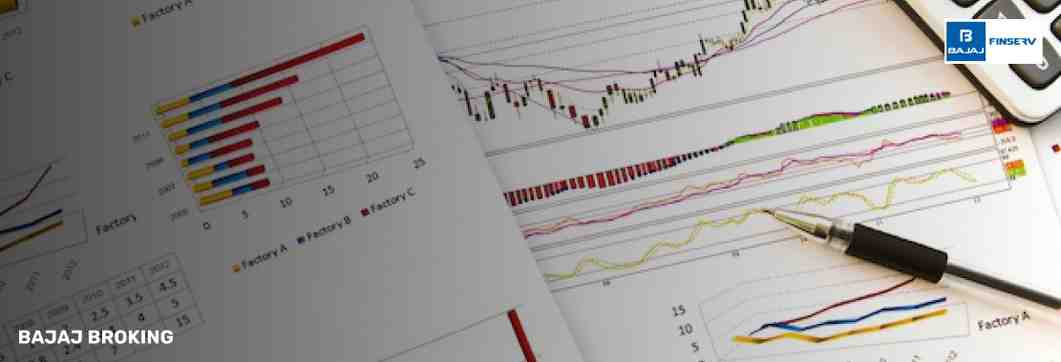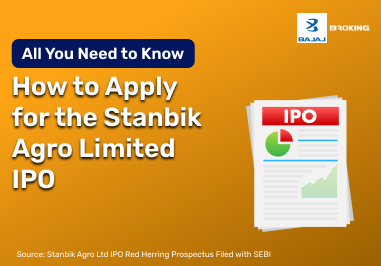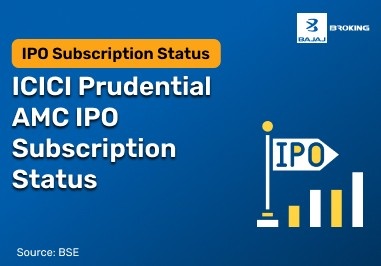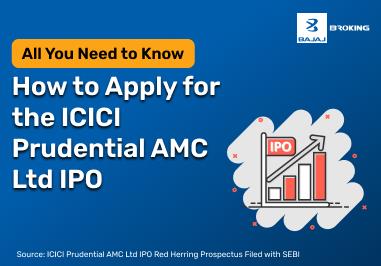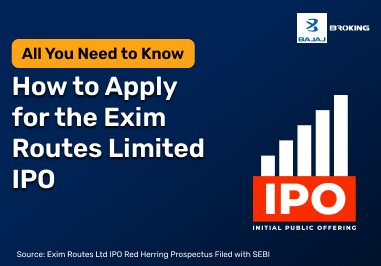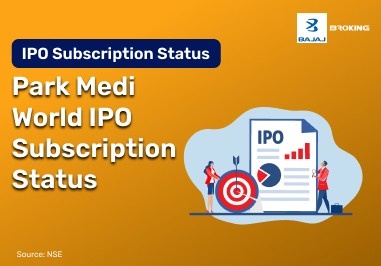What is a Passive ELSS?
A Passive ELSS is a tax-saving mutual fund that follows a specific market index, such as the Nifty 50 or Sensex. Rather than being actively managed, these funds aim to mirror the index’s composition and performance. Passive ELSS funds were introduced following a directive by the Securities and Exchange Board of India (SEBI) in 2022, allowing fund houses to offer this category of ELSS as an alternative to actively managed funds. However, a fund house can offer either active ELSS or passive ELSS, but not both simultaneously.
How Does Passive ELSS Work?
Passive ELSS funds function by tracking a predefined index, ensuring that investments align with the index’s composition. The primary goal is to replicate market movements rather than outperform them.
To better understand their functioning, consider the following:
- Replication of Market Index – The fund manager invests in stocks constituting the chosen index, maintaining the same weightage as found in the benchmark.
- Periodic Portfolio Rebalancing – Whenever the index undergoes changes in stock composition or weightage, the fund portfolio is adjusted accordingly.
- Reduced Risk Exposure – Since passive ELSS funds are broadly diversified across sectors and industries, they reduce the impact of individual stock volatility.
- Taxation on Returns – As these funds follow the ELSS framework, long-term capital gains (LTCG) above ₹1 lakh are taxed at 10%.
What are the Features of Passive ELSS?
Passive ELSS (Equity-Linked Savings Scheme) funds are designed to track a market index, offering investors a tax-efficient and lower-cost approach to equity investments. These funds come with unique characteristics that set them apart from active ELSS funds. Below are the key features that define Passive ELSS mutual funds:
- Market Index Tracking
Passive ELSS funds replicate the performance of a predefined market index, such as the Nifty 50 or Sensex. This means they invest in the same stocks as the index, in the same proportion, ensuring their returns closely mirror the benchmark. - Lower Risk Profile
Since Passive ELSS funds track a diversified index, their risk is relatively lower than actively managed ELSS funds. The diversification across multiple sectors and industries helps mitigate the impact of poor performance by any individual stock or sector. - Cost-Effective Investment Option
These funds generally have a lower expense ratio compared to active ELSS funds. As there is no frequent buying and selling of stocks, the fund management costs are reduced, allowing investors to retain a greater portion of their returns. - Transparent Investment Strategy
Unlike actively managed funds, where the fund manager’s decisions impact portfolio composition, Passive ELSS funds follow a clear, rule-based approach. This transparency enables investors to understand exactly how their money is being allocated. - Three-Year Lock-In Period
Similar to active ELSS funds, Passive ELSS funds have a mandatory lock-in period of three years. During this time, investors cannot withdraw their investments, encouraging a long-term approach to equity investments. - Tax Benefits Under Section 80C
Passive ELSS funds offer tax benefits under Section 80C of the Income Tax Act. Investors can claim deductions of up to ₹1.5 lakh per financial year, making them a tax-efficient investment option.
Types of Passive ELSS
Investors looking to diversify their portfolio while benefiting from tax savings have different types of Passive ELSS funds to choose from. These variations cater to different risk appetites and investment strategies. Below are the main types of Passive ELSS funds:
- Index-Based Passive ELSS
These funds replicate the performance of a broad market index, such as the Nifty 50 or Sensex. By investing in top companies within the index, they provide stable returns over time with minimal active intervention from the fund manager. - Sectoral and Thematic Passive ELSS
These funds track indices focused on specific sectors or themes, such as IT, banking, or pharmaceuticals. While they offer exposure to high-growth industries, they also carry higher risks due to their concentration in a particular sector. - Factor-Based Passive ELSS
Also known as smart beta funds, these Passive ELSS schemes track indices that follow specific investment factors, such as low volatility, high dividend yield, or momentum. These funds aim to enhance returns by tilting exposure toward stocks with favourable characteristics. - Multi-Cap Passive ELSS
These funds invest across large-cap, mid-cap, and small-cap stocks in the same proportion as a multi-cap index. This diversified approach balances risk and return by including companies of various market capitalisations. - Equal-Weighted Passive ELSS
Unlike traditional index funds that allocate higher weights to larger companies, equal-weighted Passive ELSS funds distribute investments equally across all stocks in the index. This reduces the impact of large-cap dominance and provides exposure to mid- and small-cap stocks.
Who Should Invest in Passive ELSS?
Passive ELSS funds can be a suitable investment option for individuals looking for a tax-saving investment with lower risk. These funds cater to investors with specific financial objectives and investment styles. Here are the key groups who may find passive ELSS funds beneficial:
- Long-term investors – Passive ELSS funds are designed for those prioritising long-term wealth creation. By tracking a broad market index, these funds aim to provide consistent returns over time, making them ideal for investors with a long-term perspective.
- Hands-off investors – Since passive ELSS funds follow a predefined market index, they require minimal active management. This makes them suitable for investors who prefer a low-maintenance approach to investing.
- Cost-conscious investors – Passive ELSS funds typically have lower expense ratios compared to actively managed ELSS funds. This allows investors to retain a larger share of their returns, making them a cost-effective option.
- Investors valuing transparency – The predefined investment strategy of passive ELSS funds provides a clear understanding of their composition and performance. Investors who appreciate transparency and predictability may find these funds appealing.
- Tax-saving investors – As passive ELSS funds qualify for tax deductions under Section 80C of the Income Tax Act, they serve as a valuable option for individuals looking to optimise their tax planning while building wealth.
How to Invest in Passive ELSS?
Investing in passive ELSS funds is a straightforward process that involves selecting a fund, assessing its suitability, and making an informed investment decision. Follow these steps to invest in passive ELSS funds efficiently:
Step 1: Open an Investment Account
To invest in passive ELSS funds, you must have an investment account with a registered mutual fund platform. If you do not have an account, you can open one by providing the required documents such as PAN, Aadhaar, and bank details.
Step 2: Select a Suitable Passive ELSS Fund
Before investing, research different passive ELSS funds to determine which one aligns with your financial goals and risk profile. Consider the following factors:
- The fund’s historical performance and market index it tracks
- Tax implications and expected returns
- The sectors and companies included in the index
- The expense ratio and ratings of the fund
Step 3: Decide on an Investment Mode
You can invest in passive ELSS funds through:
- Lump sum investment – A one-time investment for those who have surplus funds available.
- Systematic Investment Plan (SIP) – Regular contributions at fixed intervals, allowing for disciplined investing and reducing exposure to market fluctuations.
Step 4: Complete the Investment Transaction
Once you have finalised your preferred passive ELSS fund and investment mode:
- Enter the investment amount
- Select your preferred payment mode
- Confirm and complete the transaction
Step 5: Monitor and Manage Your Investment
While passive ELSS funds require minimal active management, it is advisable to periodically review your investment performance. Keep track of:
- Market trends affecting the index
- Tax implications on capital gains
- Any changes in the fund’s composition
Advantages of Investing in Passive ELSS
Investing in Passive ELSS (Equity-Linked Savings Scheme) funds presents several benefits, making them an attractive option for investors seeking tax efficiency and long-term financial growth. Below are the key advantages of opting for Passive ELSS funds:
- Tax-Saving Benefit
Passive ELSS funds offer tax deductions under Section 80C of the Income Tax Act. Investors can claim deductions of up to ₹1.5 lakh per financial year, reducing their taxable income and saving on taxes. This makes Passive ELSS a preferred choice for those looking to combine wealth creation with tax efficiency. - Market-Linked Growth
Since Passive ELSS funds track a specific benchmark index, they provide exposure to the top-performing companies in the stock market. This enables investors to benefit from overall market growth while minimising the risks associated with active stock selection. - Lower Expense Ratio
Compared to actively managed ELSS funds, passive ELSS funds typically have a lower expense ratio. Since these funds simply replicate the performance of an index rather than being actively managed, the costs associated with research, fund management, and transactions are significantly reduced. This allows investors to retain a greater portion of their returns. - Diversification with Reduced Risk
By mirroring a broad-based market index, Passive ELSS funds automatically diversify investments across multiple sectors and industries. This diversification helps mitigate the risks associated with individual stocks and sectors, making them a relatively safer option for investors looking for stable returns. - Transparency and Predictability
Passive ELSS funds follow a predefined strategy by tracking a market index, making them highly transparent. Investors have a clear understanding of where their money is being invested, which provides predictability regarding the fund’s performance. Unlike actively managed funds, where strategies can change based on the fund manager’s discretion, passive funds remain aligned with the index they track. - No Bias in Stock Selection
Since Passive ELSS funds follow a structured approach by investing in the stocks listed in an index, there is no risk of fund manager bias or misjudgment. This eliminates the possibility of human error in stock selection, ensuring a more systematic investment approach. - Lock-In Period Encouraging Long-Term Investment
Like all ELSS funds, Passive ELSS funds come with a mandatory lock-in period of three years. This encourages a disciplined investment approach, allowing investors to stay invested for the long term without frequent withdrawals. Long-term investments in equities tend to yield better returns due to the power of compounding.
Risks Involved in Passive ELSS
While Passive ELSS funds provide a range of benefits, they also come with inherent risks. It is essential for investors to understand these risks before committing to an investment. Here are the key risks associated with Passive ELSS funds:
- Market Risk: As Passive ELSS funds are linked to the stock market, their performance depends on the overall market movements. If the market experiences a downturn, the fund value may decline accordingly.
- Limited Flexibility: Since these funds replicate a benchmark index, fund managers do not have the flexibility to actively manage the portfolio. This means that even if certain stocks in the index underperform, the fund will still hold them, potentially impacting returns.
- Lock-In Period: Like all ELSS funds, Passive ELSS funds come with a three-year lock-in period. During this time, investors cannot withdraw their funds, which may be a concern for those needing liquidity.
- Absence of Active Stock Selection: Unlike actively managed ELSS funds where fund managers select stocks based on research and potential growth, Passive ELSS funds strictly follow the index. This means they might miss opportunities to outperform the market through strategic stock selection.
- Tracking Error: Although Passive ELSS funds aim to replicate the benchmark index, slight variations in actual performance compared to the index can occur due to tracking errors. These errors may arise due to fund expenses, rebalancing, or timing differences in executing trades.
Factors to Consider Before Investing in Passive ELSS
Before investing in Passive ELSS mutual funds, it is crucial to evaluate several key factors to ensure they align with your financial goals and risk tolerance. Here are the primary aspects to consider:
- Expense Ratio
Passive ELSS funds generally have lower expense ratios compared to actively managed funds. However, it is still essential to compare different funds to ensure you are selecting one with competitive fees, as lower expenses contribute to better long-term returns. - Fund Manager’s Track Record
Although passive funds track an index, the fund manager plays a crucial role in ensuring the fund remains aligned with its benchmark. Assessing the fund manager’s expertise and history in managing passive funds can provide confidence in their ability to maintain efficient tracking. - Investment Tenure
Passive ELSS funds have a mandatory lock-in period of three years, which means investors cannot withdraw their funds before this duration. While this is the shortest lock-in period among tax-saving instruments, investors should align their investment horizon accordingly. - Suitability for Your Investment Goals
Passive ELSS funds may not be suitable for all investors. If you prefer market-linked returns without active fund management, they can be a viable option. However, if you seek personalised fund strategies with an active approach to outperform market indices, an actively managed ELSS fund might be more appropriate.
Taxability of Passive ELSS
Understanding the tax implications of Passive ELSS funds is essential to make informed investment decisions. These funds offer tax-saving benefits, but they are also subject to taxation on capital gains.
- Lock-In Period and Tax Benefits
Investments in Passive ELSS funds qualify for deductions under Section 80C of the Income Tax Act, allowing investors to claim a tax benefit of up to ₹1.5 lakh per financial year. However, since these funds have a three-year lock-in period, no withdrawals can be made during this time. - Long-Term Capital Gains (LTCG) Tax
Since Passive ELSS funds have a minimum holding period of three years, there are no short-term capital gains (STCG). Gains exceeding ₹1 lakh in a financial year are taxed at 10% under LTCG tax rules, without the benefit of indexation. Gains up to ₹1 lakh remain tax-free, making these funds an efficient tax-saving investment.
Popular Passive ELSS in India
Passive ELSS mutual funds are gaining popularity among investors seeking tax-saving benefits and market-linked returns with minimal expense ratios. These funds track an index and provide diversification across various market segments. Below is a list of the top three passive ELSS mutual funds currently available in India:
Top 3 Passive ELSS Mutual Funds to Invest In
Fund Name
| AUM (in ₹ crore)
| CAGR 1Y (%)
| Expense Ratio (%)
| Lifetime CAGR (%)
|
Zerodha ELSS Tax Saver Nifty LargeMidcap 250 Index Fund
| 145.11
| 16.50
| 0.27
| 27.08
|
360 ONE ELSS Tax Saver Nifty 50 Index Fund
| 78.71
| 11.10
| 0.27
| 14.82
|
Navi ELSS Tax Saver Nifty 50 Index Fund
| 73.32
| 10.54
| 0.10
| 21.23
|
Note: The above-mentioned Passive ELSS Funds list is for informational purposes only and is not a recommendation. The funds are sorted as per the 1-Year CAGR as of January 9, 2025, which is subject to change frequently. Investors should check real-time data before making investment decisions.
Zerodha ELSS Tax Saver Nifty LargeMidcap 250 Index Fund
This fund offers a unique blend of stability and growth by investing across large- and mid-cap companies. With an expense ratio of 0.27%, it is competitively priced, while its standard deviation of 15.74% reflects slightly higher volatility. A Sharpe ratio of 0.89 highlights strong risk-adjusted returns compared to peers.
360 ONE ELSS Tax Saver Nifty 50 Index Fund
Designed for investors looking to save on taxes while participating in market growth, this fund has a low expense ratio of 0.27%, making it cost-efficient. Its standard deviation of 14.13% indicates moderate volatility. Though the Sharpe ratio of 0.55 is below the category average, its focus on Nifty 50 companies ensures reliable long-term growth.
Navi ELSS Tax Saver Nifty 50 Index Fund
A highly economical option with an expense ratio of just 0.10%, this fund offers one of the lowest costs in its category. Its standard deviation of 14.19% reflects controlled volatility, and a Sharpe ratio of 0.55 ensures balanced risk-adjusted performance. Investing in Nifty 50 companies, it provides stable returns and diversification benefits.
Investors should carefully assess their financial goals, risk appetite, and investment horizon before choosing a Passive ELSS mutual fund. By considering factors such as expense ratio, volatility, and long-term performance, they can make informed decisions that align with their tax-saving and wealth-building objectives.
